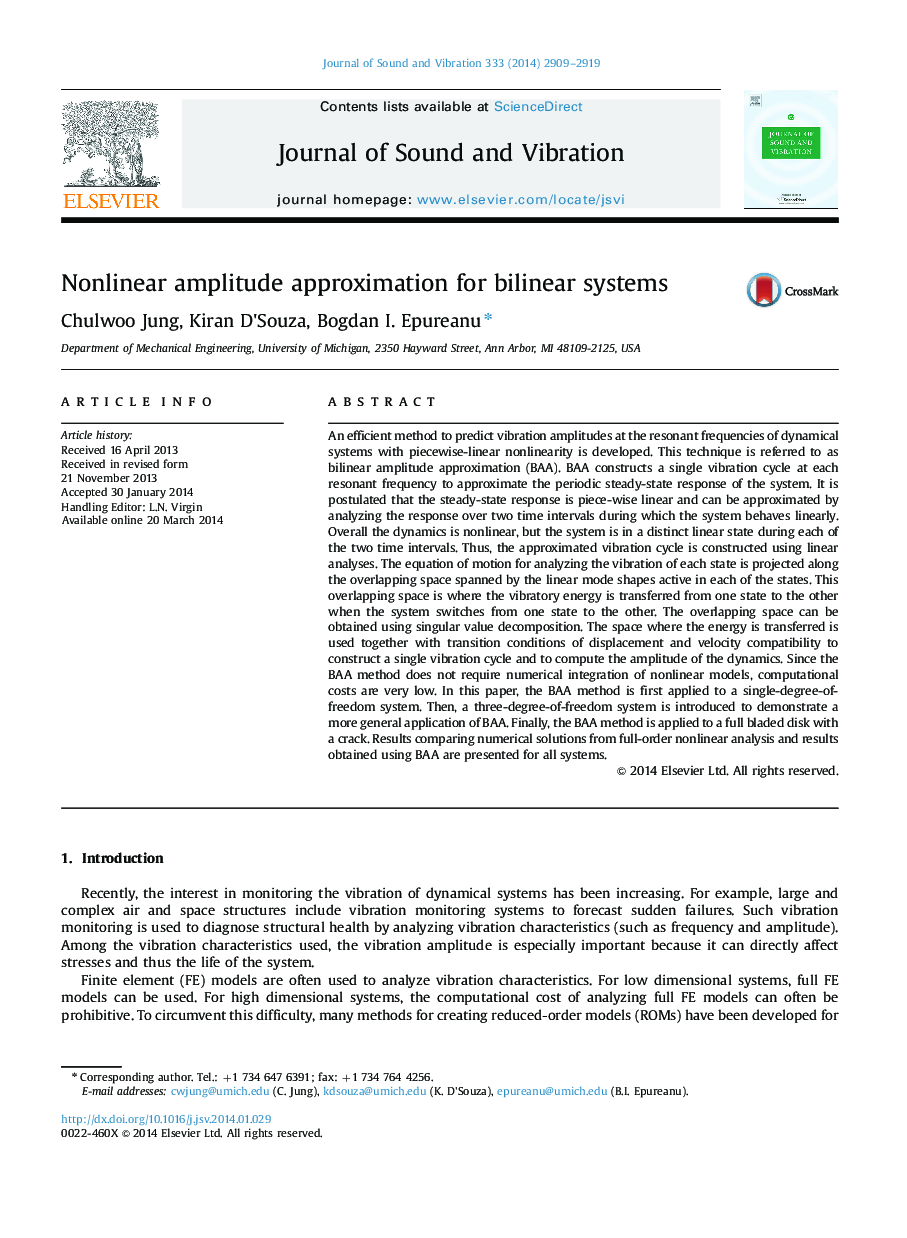| Article ID | Journal | Published Year | Pages | File Type |
|---|---|---|---|---|
| 287555 | Journal of Sound and Vibration | 2014 | 11 Pages |
An efficient method to predict vibration amplitudes at the resonant frequencies of dynamical systems with piecewise-linear nonlinearity is developed. This technique is referred to as bilinear amplitude approximation (BAA). BAA constructs a single vibration cycle at each resonant frequency to approximate the periodic steady-state response of the system. It is postulated that the steady-state response is piece-wise linear and can be approximated by analyzing the response over two time intervals during which the system behaves linearly. Overall the dynamics is nonlinear, but the system is in a distinct linear state during each of the two time intervals. Thus, the approximated vibration cycle is constructed using linear analyses. The equation of motion for analyzing the vibration of each state is projected along the overlapping space spanned by the linear mode shapes active in each of the states. This overlapping space is where the vibratory energy is transferred from one state to the other when the system switches from one state to the other. The overlapping space can be obtained using singular value decomposition. The space where the energy is transferred is used together with transition conditions of displacement and velocity compatibility to construct a single vibration cycle and to compute the amplitude of the dynamics. Since the BAA method does not require numerical integration of nonlinear models, computational costs are very low. In this paper, the BAA method is first applied to a single-degree-of-freedom system. Then, a three-degree-of-freedom system is introduced to demonstrate a more general application of BAA. Finally, the BAA method is applied to a full bladed disk with a crack. Results comparing numerical solutions from full-order nonlinear analysis and results obtained using BAA are presented for all systems.
